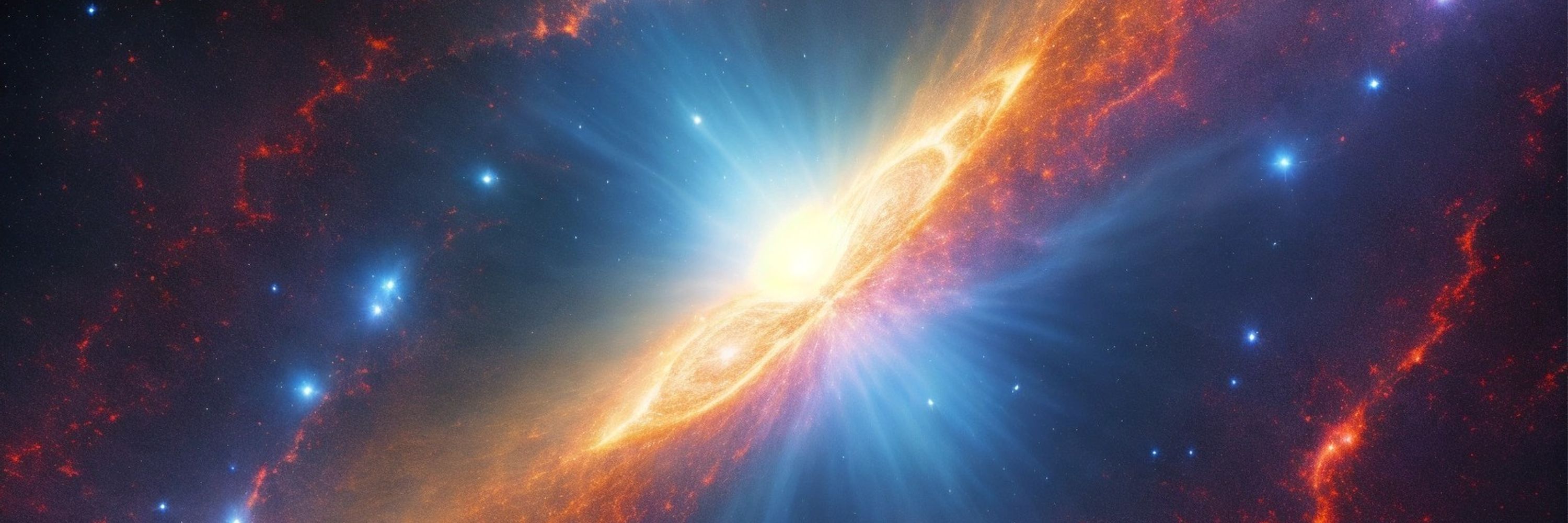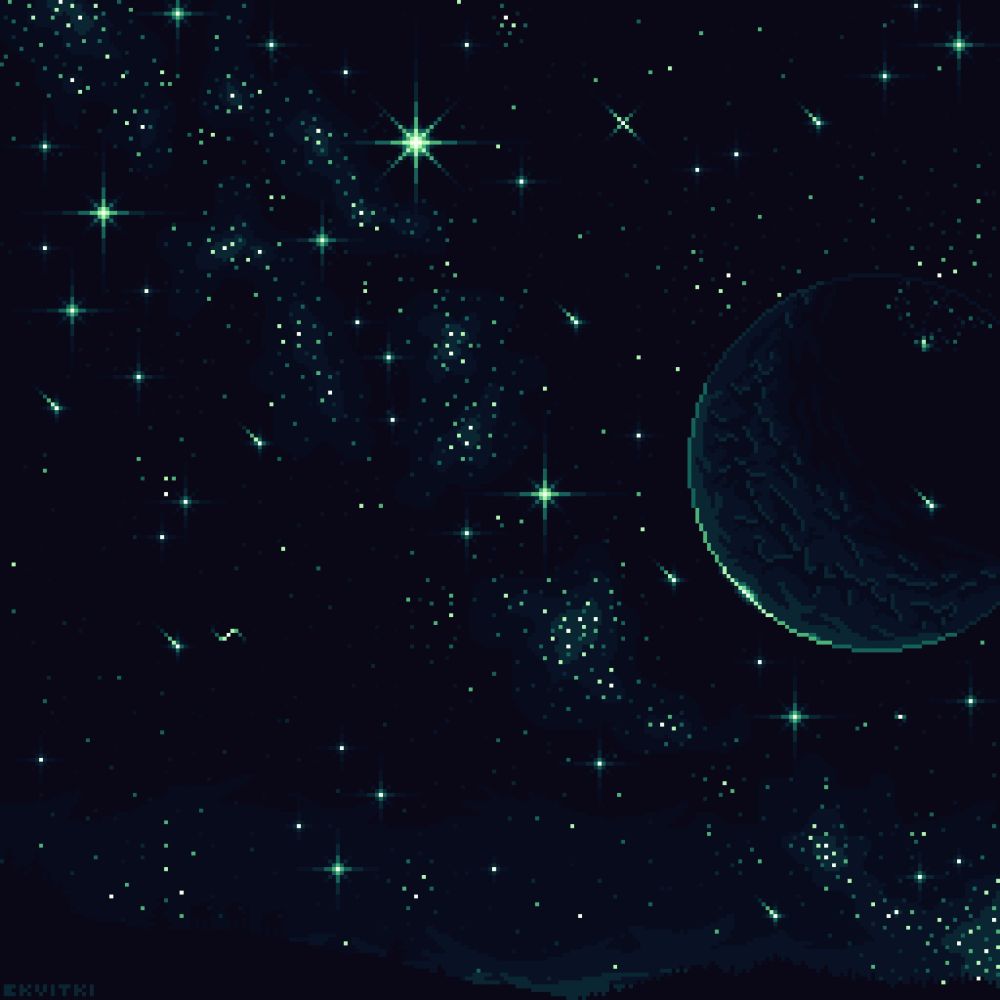
UniverseDiscovery🌌🔭
@creatorbluesky.bsky.social
Wellcome to the Universe. It includes all of space, and all the matter and energy that space contains.Earth and the Moon are part of the universe, as are the other planets and their many dozens of moons.
The Horsehead Nebula (also known as Barnard 33) is a small dark nebula in the constellation Orion. The nebula is located just to the south of Alnitak, the easternmost star of Orion’s Belt, and is part of the much larger Orion Molecular Cloud Complex.
Credit: NASA/ESA & Hubble
Credit: NASA/ESA & Hubble

January 17, 2025 at 5:31 AM
The Horsehead Nebula (also known as Barnard 33) is a small dark nebula in the constellation Orion. The nebula is located just to the south of Alnitak, the easternmost star of Orion’s Belt, and is part of the much larger Orion Molecular Cloud Complex.
Credit: NASA/ESA & Hubble
Credit: NASA/ESA & Hubble
A spiral galaxy, observed with the Hubble Space Telescope in the COSMOS survey.
It is at redshift 0.11 (lookback time 1.47 billion years) with coordinates (149.87636, 2.86185).
49 volunteers classified this galaxy in Galaxy Zoo: Hubble.🔭
It is at redshift 0.11 (lookback time 1.47 billion years) with coordinates (149.87636, 2.86185).
49 volunteers classified this galaxy in Galaxy Zoo: Hubble.🔭

January 17, 2025 at 5:30 AM
A spiral galaxy, observed with the Hubble Space Telescope in the COSMOS survey.
It is at redshift 0.11 (lookback time 1.47 billion years) with coordinates (149.87636, 2.86185).
49 volunteers classified this galaxy in Galaxy Zoo: Hubble.🔭
It is at redshift 0.11 (lookback time 1.47 billion years) with coordinates (149.87636, 2.86185).
49 volunteers classified this galaxy in Galaxy Zoo: Hubble.🔭
Tonight in
Star Gazing in the Park
Photo credit JWEBB
Milky Way, interstellar medium
Swirling ribands of dust form ribands due to gravitational, electric and tidal forces which inhabit the spaces between stars. Typically invisible this image was brought to you by the light of Zeta Ophiuchi
Star Gazing in the Park
Photo credit JWEBB
Milky Way, interstellar medium
Swirling ribands of dust form ribands due to gravitational, electric and tidal forces which inhabit the spaces between stars. Typically invisible this image was brought to you by the light of Zeta Ophiuchi

January 17, 2025 at 5:27 AM
Tonight in
Star Gazing in the Park
Photo credit JWEBB
Milky Way, interstellar medium
Swirling ribands of dust form ribands due to gravitational, electric and tidal forces which inhabit the spaces between stars. Typically invisible this image was brought to you by the light of Zeta Ophiuchi
Star Gazing in the Park
Photo credit JWEBB
Milky Way, interstellar medium
Swirling ribands of dust form ribands due to gravitational, electric and tidal forces which inhabit the spaces between stars. Typically invisible this image was brought to you by the light of Zeta Ophiuchi
This image shows the Antennae Galaxies (NGC 4038 & NGC 4039), 60 million light-years away in Corvus. These galaxies are in the process of merging, creating tidal tails and bursts of star formation from their gravitational interaction.
Photo Credit: Robert Gendler
Photo Credit: Robert Gendler

January 15, 2025 at 5:53 AM
This image shows the Antennae Galaxies (NGC 4038 & NGC 4039), 60 million light-years away in Corvus. These galaxies are in the process of merging, creating tidal tails and bursts of star formation from their gravitational interaction.
Photo Credit: Robert Gendler
Photo Credit: Robert Gendler
Open star cluster Westerlund 1. A home to a variety of young, massive stars.

January 15, 2025 at 5:52 AM
Open star cluster Westerlund 1. A home to a variety of young, massive stars.
A Flash of Life
Credit:ESA/Hubble & NASA
Credit:ESA/Hubble & NASA

January 15, 2025 at 5:50 AM
A Flash of Life
Credit:ESA/Hubble & NASA
Credit:ESA/Hubble & NASA
Billions of years from now, only one galaxy will remain as spiral galaxies NGC 2207 (right) and IC 2163 (left) slowly merge. This composite of Hubble and Webb images shows their recent encounter, triggering star formation and tidal streams.
Credit: NASA, ESA, CSA, STScI
Credit: NASA, ESA, CSA, STScI

January 14, 2025 at 6:00 AM
Billions of years from now, only one galaxy will remain as spiral galaxies NGC 2207 (right) and IC 2163 (left) slowly merge. This composite of Hubble and Webb images shows their recent encounter, triggering star formation and tidal streams.
Credit: NASA, ESA, CSA, STScI
Credit: NASA, ESA, CSA, STScI
First JWST image of 2025.
Wolf-Rayet star WR 140.
🔭 🧪
Wolf-Rayet star WR 140.
🔭 🧪

January 14, 2025 at 5:57 AM
First JWST image of 2025.
Wolf-Rayet star WR 140.
🔭 🧪
Wolf-Rayet star WR 140.
🔭 🧪
A merger, observed with the Hubble Space Telescope in the CANDELS-GOODS survey.
It is at redshift 0.27 (lookback time 3.25 billion years) with coordinates (53.18445, -27.86141).
75 volunteers classified this galaxy in Galaxy Zoo CANDELS.
It is at redshift 0.27 (lookback time 3.25 billion years) with coordinates (53.18445, -27.86141).
75 volunteers classified this galaxy in Galaxy Zoo CANDELS.

January 14, 2025 at 5:52 AM
A merger, observed with the Hubble Space Telescope in the CANDELS-GOODS survey.
It is at redshift 0.27 (lookback time 3.25 billion years) with coordinates (53.18445, -27.86141).
75 volunteers classified this galaxy in Galaxy Zoo CANDELS.
It is at redshift 0.27 (lookback time 3.25 billion years) with coordinates (53.18445, -27.86141).
75 volunteers classified this galaxy in Galaxy Zoo CANDELS.
Photo I just took of Mars setting behind the Moon

January 14, 2025 at 5:51 AM
Photo I just took of Mars setting behind the Moon
This infrared image from NASA Spitzer Space Telescope shows the Helix nebula, a cosmic starlet often photographed by amateur astronomers for its vivid colors and eerie resemblance to a giant eye.
Credit: NASA/JPL-Caltech/Univ.of Ariz.
Credit: NASA/JPL-Caltech/Univ.of Ariz.

January 14, 2025 at 5:48 AM
This infrared image from NASA Spitzer Space Telescope shows the Helix nebula, a cosmic starlet often photographed by amateur astronomers for its vivid colors and eerie resemblance to a giant eye.
Credit: NASA/JPL-Caltech/Univ.of Ariz.
Credit: NASA/JPL-Caltech/Univ.of Ariz.
The Milky Way above the Ring of Brodgar, on Orkney.
In an otherwise clear sky, it was "disappointing" to have that band of cloud that just didn't want to disperse.
The bright light on the clouds is from the town of Stromness, where we had docked a few hours earlier.
#Photography
In an otherwise clear sky, it was "disappointing" to have that band of cloud that just didn't want to disperse.
The bright light on the clouds is from the town of Stromness, where we had docked a few hours earlier.
#Photography

January 13, 2025 at 7:23 AM
The Milky Way above the Ring of Brodgar, on Orkney.
In an otherwise clear sky, it was "disappointing" to have that band of cloud that just didn't want to disperse.
The bright light on the clouds is from the town of Stromness, where we had docked a few hours earlier.
#Photography
In an otherwise clear sky, it was "disappointing" to have that band of cloud that just didn't want to disperse.
The bright light on the clouds is from the town of Stromness, where we had docked a few hours earlier.
#Photography
Sums it up nicely

January 13, 2025 at 5:56 AM
Sums it up nicely
Reposted by UniverseDiscovery🌌🔭

January 12, 2025 at 3:59 AM
The Milky Way above the Ring of Brodgar, on Orkney.
In an otherwise clear sky, it was "disappointing" to have that band of cloud that just didn't want to disperse.
The bright light on the clouds is from the town of Stromness, where we had docked a few hours earlier.
#Photography
In an otherwise clear sky, it was "disappointing" to have that band of cloud that just didn't want to disperse.
The bright light on the clouds is from the town of Stromness, where we had docked a few hours earlier.
#Photography

January 13, 2025 at 5:55 AM
The Milky Way above the Ring of Brodgar, on Orkney.
In an otherwise clear sky, it was "disappointing" to have that band of cloud that just didn't want to disperse.
The bright light on the clouds is from the town of Stromness, where we had docked a few hours earlier.
#Photography
In an otherwise clear sky, it was "disappointing" to have that band of cloud that just didn't want to disperse.
The bright light on the clouds is from the town of Stromness, where we had docked a few hours earlier.
#Photography
An astrophysicist and a neurosurgeon concluded that the human brain and the universe basically grow as a result of similar physical principles.
Today’s House of Study goody looks at a myriad of similar connections, with many exquisite photos:
Today’s House of Study goody looks at a myriad of similar connections, with many exquisite photos:

January 10, 2025 at 6:19 AM
An astrophysicist and a neurosurgeon concluded that the human brain and the universe basically grow as a result of similar physical principles.
Today’s House of Study goody looks at a myriad of similar connections, with many exquisite photos:
Today’s House of Study goody looks at a myriad of similar connections, with many exquisite photos:
Pismis 24, an open star cluster around 8,000 light-years away in the core of the NGC 6357 nebula in the constellation Scorpius.
Image Credit: NASA, ESA, and J. Maíz Apellániz, et al
Image Credit: NASA, ESA, and J. Maíz Apellániz, et al

January 10, 2025 at 6:16 AM
Pismis 24, an open star cluster around 8,000 light-years away in the core of the NGC 6357 nebula in the constellation Scorpius.
Image Credit: NASA, ESA, and J. Maíz Apellániz, et al
Image Credit: NASA, ESA, and J. Maíz Apellániz, et al
Hard to process the devastation I’ve witnessed in the last two days. Still in a state of shock for those who have lost so much in such a short period of time. #NoWords 💔

January 9, 2025 at 3:12 AM
Hard to process the devastation I’ve witnessed in the last two days. Still in a state of shock for those who have lost so much in such a short period of time. #NoWords 💔
JWST peers deep into space, taking a snapshot of over 20,000 galaxies, some whose light comes to us from over 12 billion light-years away.
This image was presented today on AAS Nova.
This image was presented today on AAS Nova.

January 9, 2025 at 3:11 AM
JWST peers deep into space, taking a snapshot of over 20,000 galaxies, some whose light comes to us from over 12 billion light-years away.
This image was presented today on AAS Nova.
This image was presented today on AAS Nova.
Reposted by UniverseDiscovery🌌🔭
The Milky Way in the skies of Western Australia photographed by Trevor Dobson🌌

January 7, 2025 at 10:53 AM
The Milky Way in the skies of Western Australia photographed by Trevor Dobson🌌
Reposted by UniverseDiscovery🌌🔭
Three years ago, at the urging of my dying mother, I purchased my very first camera and commenced my photography journey. After countless videos and articles on how to everything Canon R5 it has been worth it. A few of my favorite landscapes from year 3 #photography #canonusa
#landscapephotography
#landscapephotography




January 6, 2025 at 6:21 PM
Three years ago, at the urging of my dying mother, I purchased my very first camera and commenced my photography journey. After countless videos and articles on how to everything Canon R5 it has been worth it. A few of my favorite landscapes from year 3 #photography #canonusa
#landscapephotography
#landscapephotography
A Whirlpool Galaxy |NASA|

January 6, 2025 at 6:15 PM
A Whirlpool Galaxy |NASA|




